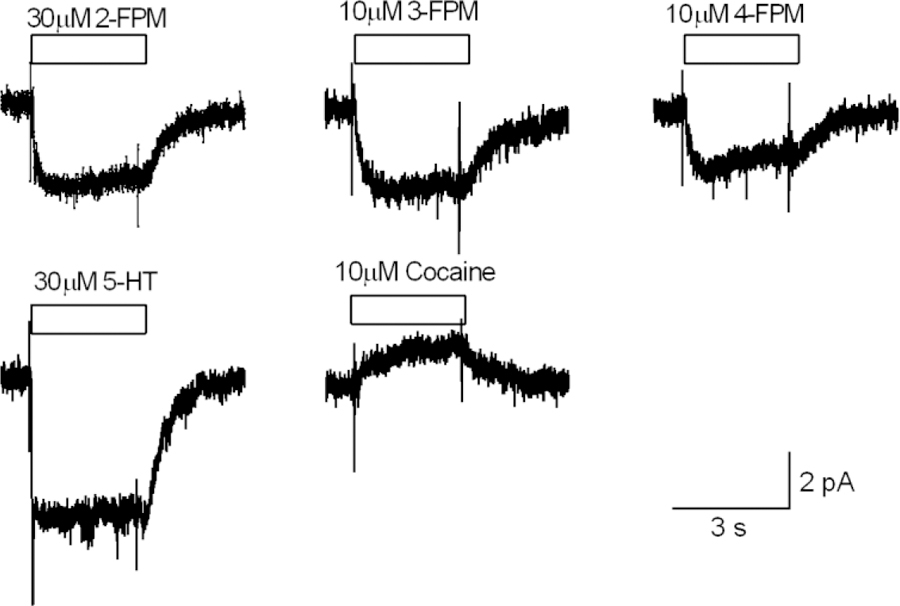Figure 4:

Representative traces of ionic currents mediated via hSERT, recorded from the same cell (3 different batches of cells were recorded). The three upper panels show currents induced by 30 µM 2-FPM (−4 pA; n = 7), 10 µM 3-FPM (−3.8 pA; n = 6) and 10 µM 4-FPM (−2.5 pA; n = 7), respectively. These currents were inwardly directed and resembled the current induced by 30 µM 5-HT (−7 pA; n = 3) (left lower panel). Application of cocaine (10 µM; n = 4) gave rise to an outwardly directed current, which presumably reflected blockage of a substrate independent leak conductance through hSERT.
